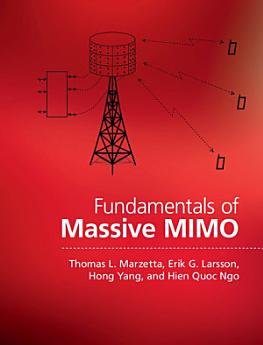Fundamentals of Massive MIMO
เกี่ยวกับ eBook เล่มนี้
เกี่ยวกับผู้แต่ง
Thomas L. Marzetta is the originator of Massive MIMO. He is a Bell Labs Fellow at Nokia and a Fellow of the IEEE, and previously worked at Schlumberger-Doll Research and Nichols Research Corporation. He has received numerous recognitions and awards, including the IEEE W. R. G. Baker Award (2015), the IEEE Communications Society Stephen O. Rice Prize (2015), and the IEEE Guglielmo Marconi Prize Paper Award (2013). He is the recipient of an Honorary Doctorate from Linköping University, Sweden.
Erik G. Larsson is a Professor at Linköping University, Sweden and a Fellow of the IEEE. He is the co-author of 120 journal papers and the textbook Space-Time Block Coding for Wireless Communications (Cambridge, 2003). He currently serves as Chair of the IEEE SPS Technical Committee for Signal Processing for Communications and Networking (2015–2016). In both 2012 and 2014, he received the IEEE Signal Processing Magazine Best Column Award, and in 2015 he was awarded the IEEE Communications Society Stephen O. Rice Prize.
Hong Yang is a member of technical staff at Nokia Bell Labs' Mathematics of Networks and Communications Research Department, where he conducts research into wireless communications networks. He has over fifteen years of industrial research and development experience, and has previously worked in both the Department of Radio Frequency Technology Systems Engineering and the Wireless Design Center at Alcatel-Lucent.
Hien Quoc Ngo is a researcher at Linköping University, Sweden. In 2015, he received the IEEE Communications Society Stephen O. Rice Prize and the IEEE Sweden VT-COM-IT Joint Chapter Best Student Journal Paper Award. He was also an IEEE Communications Letters exemplary reviewer in 2014 and an IEEE Transactions on Communications exemplary reviewer in 2015.







